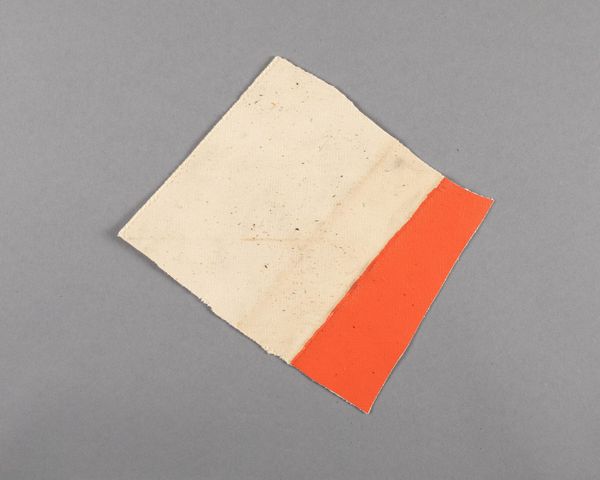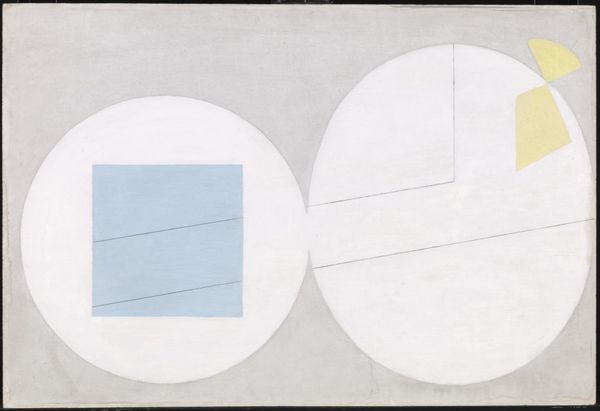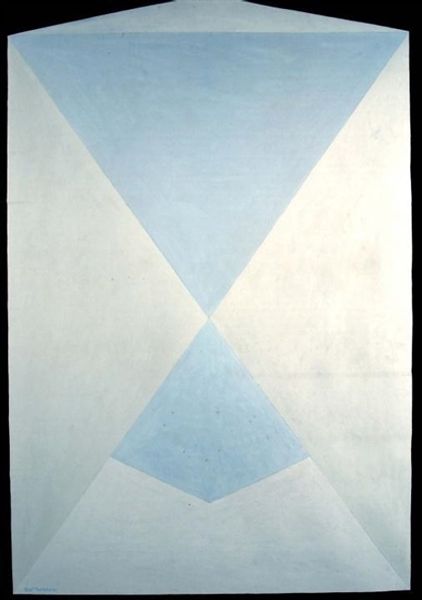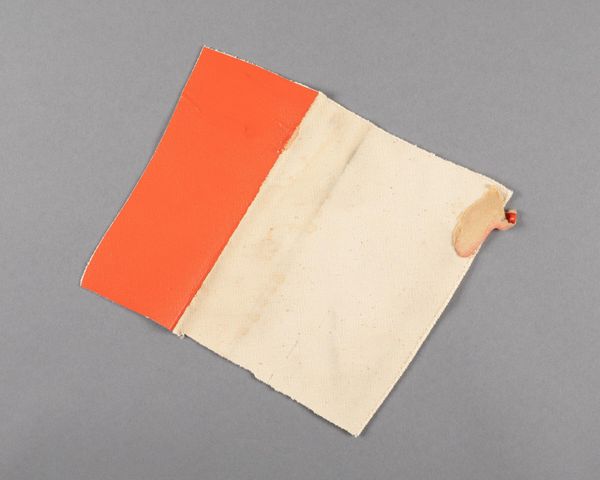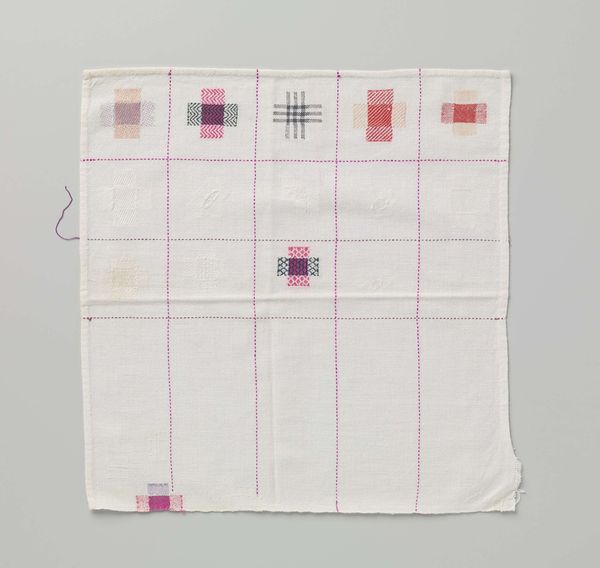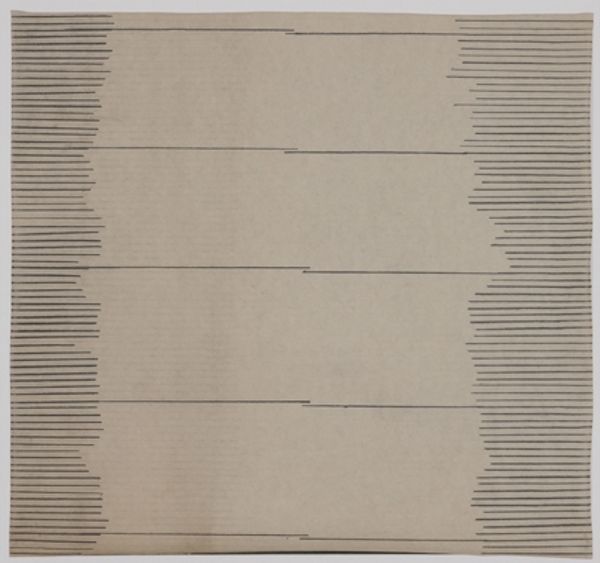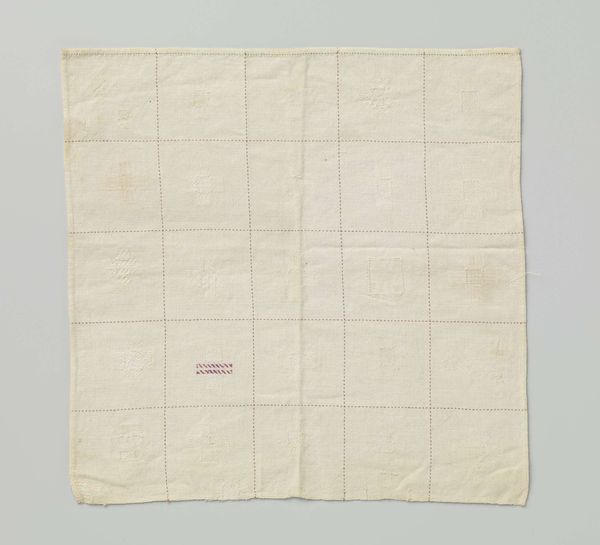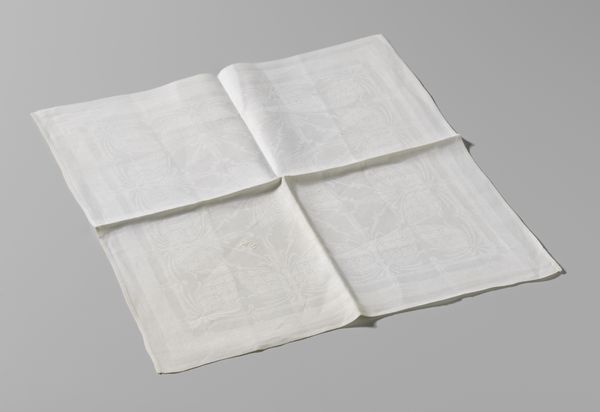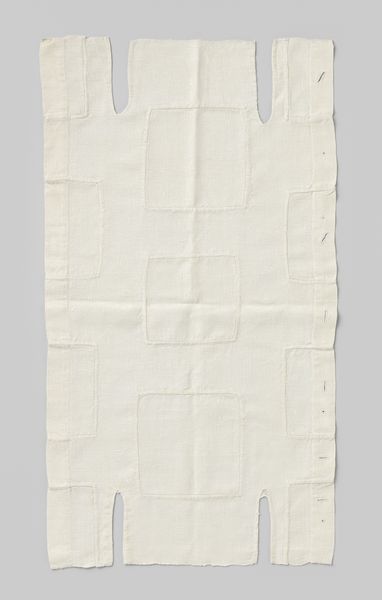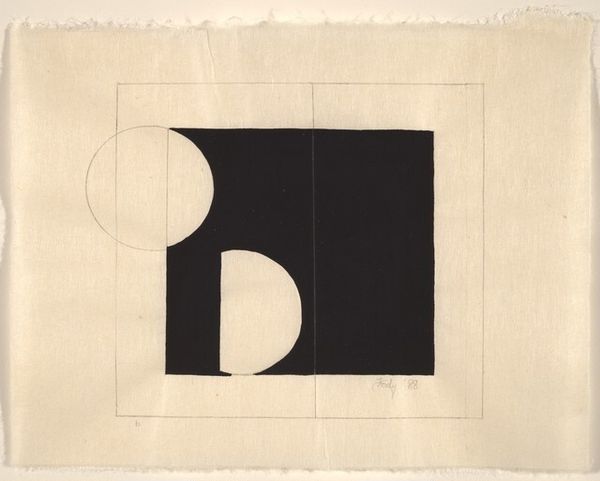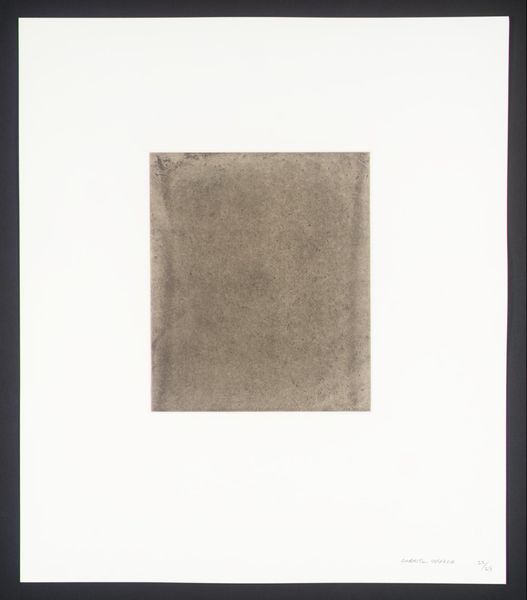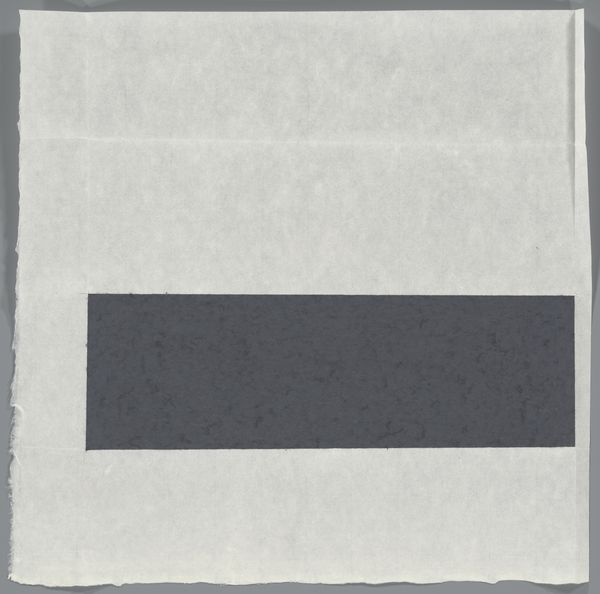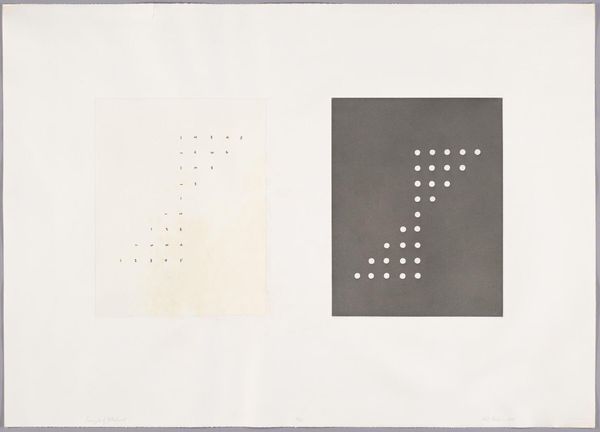
print, textile
#
print print-like
# print
#
light coloured
#
textile
#
geometric
Dimensions: height 25 cm, width 35.2 cm, height 18 cm, width 27.8 cm
Copyright: Rijks Museum: Open Domain
Curator: Here we have “Staal met bedrukte zijde, dessin Diana,” a printed silk textile sample produced by the Wiener Werkstätte between 1911 and 1917. Editor: My initial reaction is… stark. It’s minimalist with those strong diagonals, but something about the gradients lends it a softened feel. Curator: It's interesting to consider how the Wiener Werkstätte positioned itself within the debates surrounding art and design at the turn of the century. They aimed to elevate craft to the level of fine art, fostering collaboration between artists and artisans. Pieces like this textile sample allowed them to reach a wider audience, democratizing access to innovative design. Editor: Exactly! You see it right there in the object itself, the blurring of boundaries. It’s silk, a luxury fabric, but the printed design—a geometric abstraction, really—brings in this element of mass production and challenges the traditional hand-crafted aesthetic usually associated with high-end textiles. It's a beautiful exploration of material and method. The printed silk had very precise uses, and some uses dictated the look, feel and life-cycle of it. Curator: Indeed. And it speaks to the broader cultural shifts of the time, doesn’t it? A move away from ornate decoration towards simpler, more functional forms, reflecting the influence of movements like the Arts and Crafts movement, and eventually leading to Bauhaus design principles. It certainly made innovative home design more approachable to middle class clients. Editor: And look at the "Diana" reference. The design implies that even the mythological goddess of the hunt could be part of mass culture. Do you suppose that changed the public image of female archetypes? Curator: Well, I’m convinced the Werkstätte aimed to project images that would appeal to an evolving demographic in order to drive the market and retain power. Editor: Absolutely, it all comes back to the means of production. I really appreciate this piece because it makes me reconsider my assumptions. Curator: For me, it is interesting to study their attempt to change our perceptions around applied arts! Editor: Indeed! Both aesthetic quality and functionality working together.
Comments
No comments
Be the first to comment and join the conversation on the ultimate creative platform.

